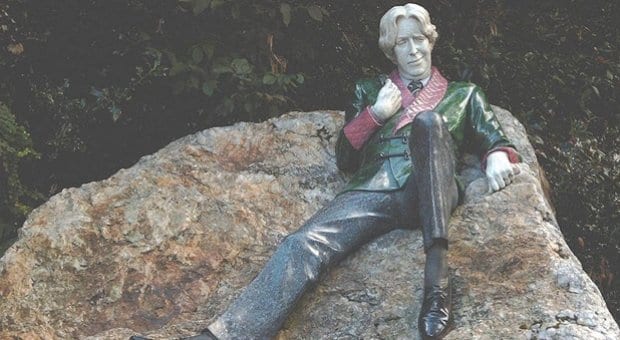
The Oscar Wilde statue in Merrion Square park. Credit: Sandro Schachner
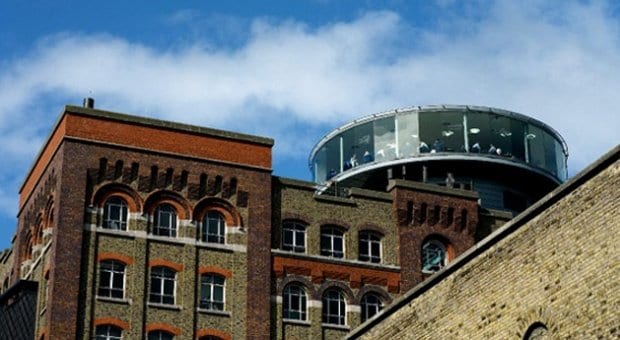
The modern Gravity Bar, perched atop the Guinness Storehouse. Credit: guinness-storehouse.com
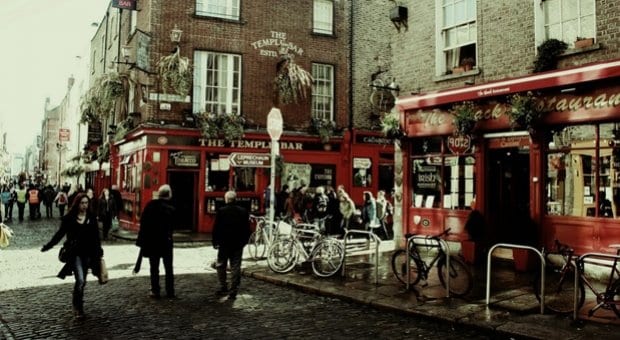
The Temple Bar area. Credit: Brendon A. Smith
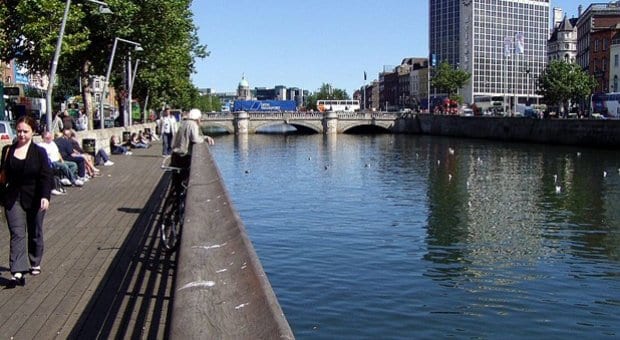
Stroll the boardwalk along River Liffey. Credit: Thorsten Pohl
I’m not in Dublin long before I find myself partying hard with a crew of locals, downing rounds while watching the nightly drag cabaret at Pantibar, covered in glitter thanks to an enthusiastic young queen who tossed a handful into my face, hair and shirt.
As the cabaret winds down, someone in our crew suggests we make our way over to The Dragon nightclub to keep the party going.
We make our way across the River Liffey to the old Georgian building that houses The Dragon, and after waiving my friends in, the bouncer stops me.
“You know this is a gay bar, right?” he asks, staring into my eyes gravely.
I stare back, dumbfounded. “I’m wearing glitter.”
“Right,” he laughs. “In you go.”
It’s a moment that almost perfectly sums up the gay experience in Ireland — where homosexuality was decriminalized only in 1993 and where a gay bar bouncer’s primary responsibility is to make sure straights don’t accidentally walk in and cause a disturbance, but where some of history’s most fabulous homosexuals hail from and the country is now on a path to legalizing gay marriage.
That seeming contradiction is just part of what makes Dublin so fascinating. It’s a thoroughly modern, vibrant and welcoming city with a long, rich, complicated history. But don’t let that put you off — Dubliners are among the friendliest people you’ll ever meet.
The best way to make friends in Dublin is at the pub. Don’t be surprised when locals recognize you as a visitor and invite you to join them for a round. And don’t be put off when the conversation inevitably turns into a series of witty putdowns — it’s all good craic (pronounced “crack,” it’s Gaelic for “fun”). Give back as good as you take and you’ll make a friend for life. The Front Lounge and The George are two fun gay pubs that attract a mixed clientele with different themed nights. There’s more to the gay scene, and the local monthly gay mag GCN (for “gay community news”) will have up-to-date listings.
Outside the gay scene, the Temple Bar area is legendary among travellers for its pub and nightlife scene. This tourist-heavy area is chockablock with interesting pubs serving unique home-brews and featuring nightly live musicians. This is what most people picture when they think “Irish pub.”
The true booze connoisseur can also get a peak at the process behind two of Dublin’s most famous exports at the Guinness Storehouse and the Old Jameson Distillery. Both offer tours that walk you through the brewing and distilling processes, while the Guinness tour also has an interesting component showcasing some of the beer’s wackier old ad campaigns (“Guinness is good for you!”) and side projects (The Guinness Book of World Records). Admission to Guinness comes with a free pint, while select Jameson tour participants will be invited to compare three different brands of whiskey.
Now, lest you get the impression that a trip to Dublin is all about drinking — although, yes, you should consider your trip to Dublin a failure if you’re not drunk at least 25 percent of the time — signs, statues and memorials everywhere will point you toward the city’s rich literary and cultural history. Dublin was for a time the second greatest city in the British Empire, with architecture, schools and an artistic output to match that reputation.
A cultural walk could start on the grounds of Trinity College. The buildings on campus date from as far back as 1592 and have been home to some of Dublin’s greatest scholars. Trinity College Library is open to the public and houses many treasures on display, including the famed ninth-century illuminated manuscript the Book of Kells.
Just to the south, you’ll find a block containing several of Ireland’s national museums, including the National Library, Gallery and Heraldic Museum. To the east is Merrion Square — a green area surrounded by old Georgian mansions that once housed some of Ireland’s most famous writers. Gay icon Oscar Wilde’s old residence is commemorated with a small, unexciting plaque, but the park has a lovely statue of him adorned with some of Wilde’s choicest quotes.
North of the river, the Dublin Writers Museum celebrates the literary heritage of the city with portraits, exhibits, letters and personal effects of James Joyce, Jonathan Swift, WB Yeats, Wilde, Bernard Shaw and more.
Fans of Swift (A Modest Proposal, Gulliver’s Travels) ought to visit St Patrick’s Cathedral. Swift was once the dean of St Patrick’s, and the exquisite 13th-century cathedral is home to a memorial and early prints of his work.
Dublin also has a splendid live-theatre tradition and is home to some of the stage’s greatest living playwrights. Exciting shows play year-round at the Abbey Theatre and the Gaiety Theatre. There’s also an annual gay theatre festival in May.
For a starker look at Ireland’s political history and long struggle for independence, it’s well worth a visit to Kilmainham Gaol. Guided tours of the 19th-century jail showcase cells where leaders of the various Irish rebellions were held and paint a picture of what it would have been like to be confined and punished there.
One of the nicest things about visiting Dublin is knowing that at the end of the day, you can stroll into just about any bar or pub and make a bunch of new friends almost instantly. Pull up a stool, order some pints for you and your new crew, and the good craic will be right around the corner. I can’t wait to go back to Ireland because I know I’ll have friends new and old waiting for me there.
For the most up-to-date travel information on gay Dublin, see our City Guide, Listings Guide, Events Guide and Activities Guide.
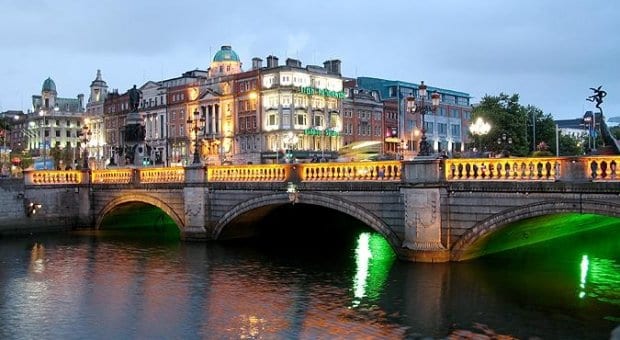

 Why you can trust Xtra
Why you can trust Xtra